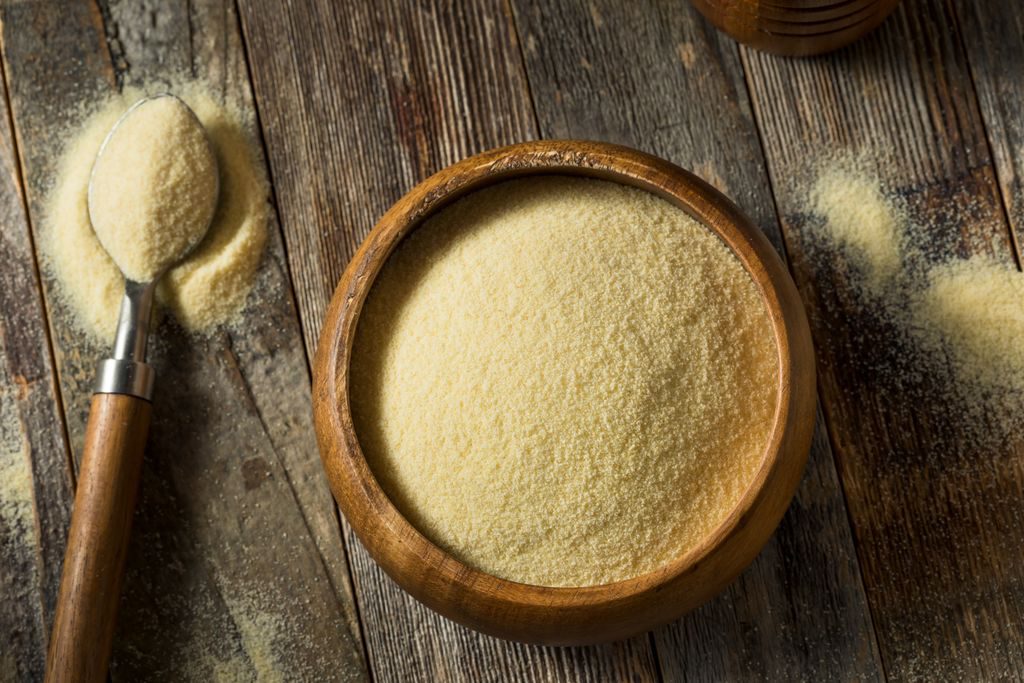Semolina flour
The semolina flour is obtained by grinding durum wheat and is ideal for bread, pizza and savory dough.

The semolina flour is a product of the milling of durum wheat, characterized by a light yellow color and a grainy texture. Compared to traditional durum wheat semolina, the re-milled one undergoes an extra milling step and is more refined, less sandy, but still more defined than the impalpable plain wheat flour. The difference with durum wheat semolina, in addition to the less intense color, also lies in its use: the latter is used in the production of pasta, the semolina flour, on the other hand, is ideal for bread, pizza and others products that require leavening and compactness, less soft and frothy than those obtainable with plain flour.
The semolina flour in the kitchen
The uses of semolina flour therefore range from bread-making to use as flour for sweet and savory dough to breading crispy fries. The texture of the semolina makes the products obtained with this ingredient more crumbly and fragrant: it can be used both in the production of homemade bread and pizza, breadsticks, savory and rustic cakes, but also for biscuits to be drenched in tea.
Nutritional values of semolina flour
The semolina flour contains gluten, therefore it is unsuitable for those suffering from celiac disease: it can however be replaced with gluten-free flours and specific mixes for baking. The presence of carotenoids is the reason why the color of the semolina flour, although to a lesser extent than the integral and classic one, is yellow. From the caloric point of view, the calorie count is high: 100 grams of semolina contain about 360 kcal.




